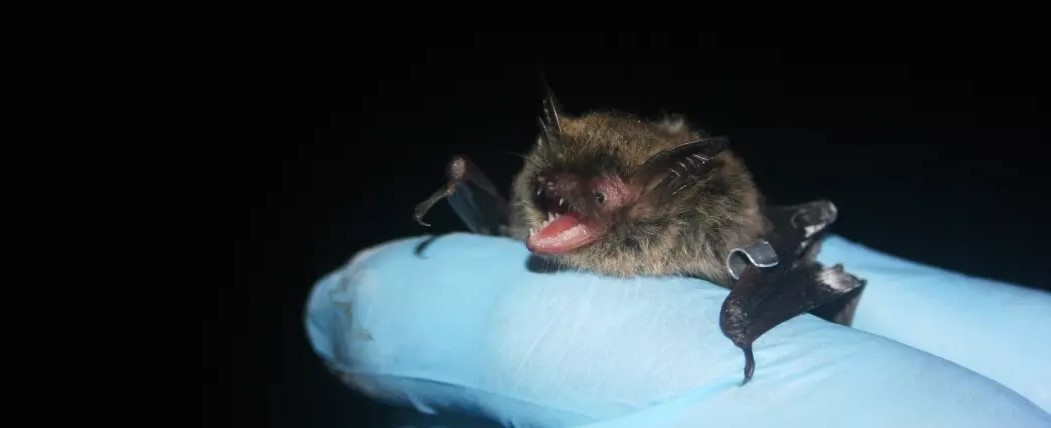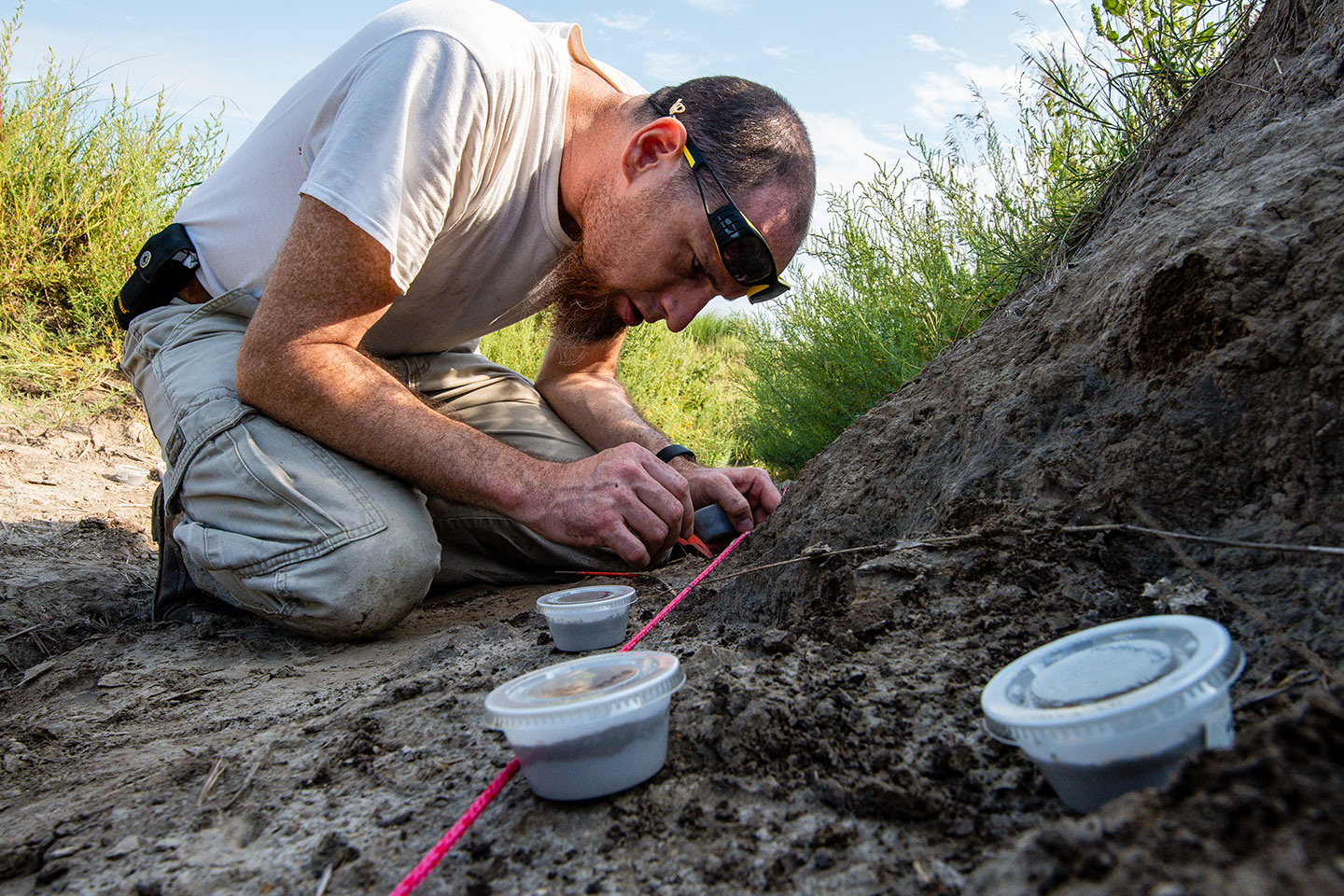Northern long-eared bat
Status: Threatened

A medium-sized bat, the Northern Long-eared Bat (Myotis septentrionalis) is between 3-4 inches long with a wingspan of 9-10 inches. It has medium to dark brown fur on its back while its underside is tan or light brown. This species also has a relatively long tail which is approximately one-third its total length. It is a member of the Myotis bat family; the term “Myotis” means “mouse ears.” That said, the Northern-long eared bat is easily distinguished by its long ears.
The Northern Long-eared Bat weights between 6-9 grams – about the weight of 3 pennies. Females are usually slightly larger than males.
The Northern Long-eared bat was officially declared Threatened on the national Threatened and Endangered species list.
Range
Northern Long-eared Bats are found throughout the northeastern and northern central United States and into Canada. Their eastern range extends from Maine to Virginia along the Atlantic coast south to northern Georgia and Alabama. Their range extends west to Montana and the Yukon Territory in Canada. A total of 37 states, the District of Columbia and 13 Canadian provinces are included in its official U.S. Fish and Wildlife Service range map.
Diet
Like all bats found in Nebraska, the Northern Long-eared Bat is an insectivore, meaning it eats only insects. It emerges at dusk to begin feeding using echolocation and gleaning insects off vegetation. It feeds mainly in the understory of dense woodlands.
They eat all insects but feed primarily on leafhoppers, moths, beetles, flies and caddisflies.
Habitat
In the summer months, Northern Long-eared Bats can be found in woodland areas. They roost singly or in colonies under bark of trees and in tree cavities. Males and non-reproductive females can also be found roosting in cooler locations such as mines. Occasionally, they have been known to roost in structures including buildings or barns, but this is rare.
In the winter months, Northern Long-eared Bats do not migrate but rather find hibernating spots (hibernacula) in caves and mines with a constant temperature and little to no air movement. They often squeeze into tiny cracks or crevices within these caves or mines.
Reproduction
Mating occurs in late summer or fall before the bats enter their hibernacula. The male’s sperm is stored by the females until spring when they emerge from hibernation. At this time, the females ovulate (release an egg) and use the stored sperm to fertilize the egg. This phenomenon is known as delayed fertilization.
Upon fertilization of the egg, females form maternity colonies of 30-60 pregnant females. These females will remain together with their young throughout the summer.
Once fertilization occurs, gestation lasts about 50-60 days. A single pup is born helpless and blind. Pups nurse from their mothers until approximately 1 month. At about 3 weeks, young bats begin flying. They are completely independent from their mother by late summer. Males do not help with raising young.
Population status
The population status of Northern Long-eared Bats is bleak. In 2006, a new disease – White-nose Syndrome – was first detected in hibernacula in New York. Since then, the disease has been transferred from hibernacula to hibernacula and rapidly spread from New York across much of the eastern United States. With the spread of White-nose Syndrome, the population of some populations of Northern Long-eared Bats has declined by 99%.
Other causes of population decline are due to extensive logging and tree thinning of their forested habitat, human disturbance while hibernating and mortality from wind farms. Additionally, human activities have caused changes in cave climate which effect the bat’s hibernating. That said, the population of Northern Long-eared Bats likely would have been sustainable if it were not for the introduction of White-nose Syndrome.
Management and outlook
Much work is being done to help populations of Northern Long-eared Bats. Most notable is the considerable work being done in regards to white-nose syndrome. Researchers from government entities, universities and private non-profits have been working to understand this disease and how to help bats already infected.
Others are working to help stop or slow the spread of the disease through mine closing, developing national decontamination protocols and placing advisories at caves and mines detailing these decontamination protocols.
Several state and national agencies have also begun protection for Northern Long-eared Bat hibernacula to ensue surviving bats have adequate wintering habitat.
Other work includes research into the cause of high bat mortality from wind turbines. With the data provided by this research, plans are developed to help wind farms operate while striving for reduced bat mortality.
In January 2016, the Northern Long-eared Bat was officially listed as a Threatened species under the 1973 Endangered Species Act. This listing provides protection for the species and its habitat.
Conservation help
Individuals who wish to help with bat conservation can begin by learning about bats and their role in our ecosystems and economies. Share this knowledge with others to help society gain an understanding and appreciation for the role bats play.
Donations to conservation organizations which help with research, land and habitat conservation and education is also critical to ensuring Northern Long-eared Bat populations do not decline further.




